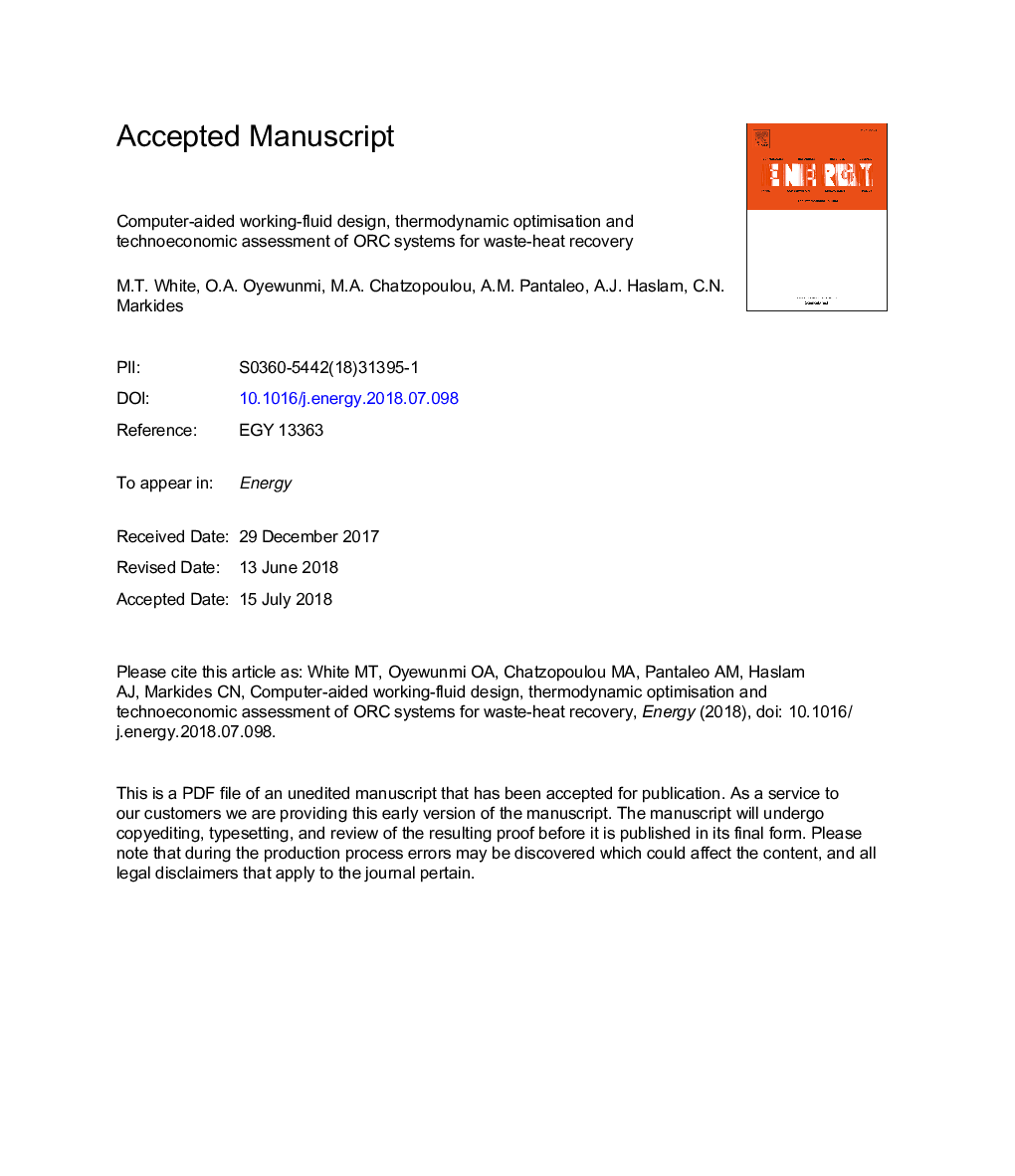| کد مقاله | کد نشریه | سال انتشار | مقاله انگلیسی | نسخه تمام متن |
|---|---|---|---|---|
| 8070933 | 1521389 | 2018 | 42 صفحه PDF | دانلود رایگان |
عنوان انگلیسی مقاله ISI
Computer-aided working-fluid design, thermodynamic optimisation and thermoeconomic assessment of ORC systems for waste-heat recovery
دانلود مقاله + سفارش ترجمه
دانلود مقاله ISI انگلیسی
رایگان برای ایرانیان
کلمات کلیدی
موضوعات مرتبط
مهندسی و علوم پایه
مهندسی انرژی
انرژی (عمومی)
پیش نمایش صفحه اول مقاله

چکیده انگلیسی
The wider adoption of organic Rankine cycle (ORC) technology for power generation or cogeneration from renewable or recovered waste-heat in many applications can be facilitated by improved thermodynamic performance, but also reduced investment costs. In this context, it is suggested that the further development of ORC power systems should be guided by combined thermoeconomic assessments that can capture directly the trade-offs between performace and cost with the aim of proposing solutions with high resource-use efficiency and, importantly, improved economic viability. This paper couples, for the first time, the computer-aided molecular design (CAMD) of the ORC working-fluid based on the statistical associating fluid theory (SAFT)-γ Mie equation of state with thermodynamic modelling and optimisation, in addition to heat-exchanger sizing models, component cost correlations and thermoeconomic assessments. The resulting CAMD-ORC framework presents a novel and powerful approach with extended capabilities that allows the thermodynamic optimisation of the ORC system and working fluid to be performed in a single step, thus removing subjective and pre-emptive screening criteria that exist in conventional approaches, while also extending to include cost considerations relating to the resulting optimal systems. Following validation, the proposed framework is used to identify optimal cycles and working fluids over a wide range of conditions characterised by three different heat-source cases with temperatures of 150 °C, 250 °C and 350â¯Â°C, corresponding to small- to medium-scale applications. In each case, the optimal combination of ORC system design and working fluid is identified, and the corresponding capital costs are evaluated. It is found that fluids with low specific-investment costs (SIC) are different to those that maximise the power output. The fluids with the lowest SIC are isoheptane, 2-pentene and 2-heptene, with SICs of £5620, £2760 and £2070 per kW respectively, and corresponding power outputs of 32.9 kW, 136.6 kW and 213.9â¯kW.
ناشر
Database: Elsevier - ScienceDirect (ساینس دایرکت)
Journal: Energy - Volume 161, 15 October 2018, Pages 1181-1198
Journal: Energy - Volume 161, 15 October 2018, Pages 1181-1198
نویسندگان
M.T. White, O.A. Oyewunmi, M.A. Chatzopoulou, A.M. Pantaleo, A.J. Haslam, C.N. Markides,